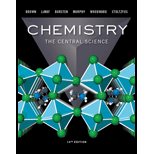
Study Guide for Chemistry: The Central Science
14th Edition
ISBN: 9780134554075
Author: Theodore E. Brown, H. Eugene LeMay, Bruce E. Bursten, Catherine Murphy, Patrick Woodward, Matthew E. Stoltzfus, James C. Hill
Publisher: PEARSON
expand_more
expand_more
format_list_bulleted
Textbook Question
Chapter 4.2, Problem 4.3.1PE
Yes or No: Will a precipitate form when solutions of Ba(NO3)2 and KOH are mixed?
Expert Solution & Answer
Want to see the full answer?
Check out a sample textbook solution
Students have asked these similar questions
Using first- and second-order integrated rate laws
At a certain temperature the rate of this reaction is second order in H3PO4 with a rate constant of 0.709M¯¯
2H3PO4 (aq) → P₂O5(aq)+3H₂O(aq)
-1
-1
·S
Round your answer to 2 significant digits.
Suppose a vessel contains H3PO4 at a concentration of 0.880M. Calculate how long it takes for the concentration of H3PO4 to decrease to 0.141M. You may
assume no other reaction is important.
x10
?
00.
18
무
Naming coordination compounds
Name these coordination compounds.
formula
[FeCl2 (CO)4] Cl
Na₂ [MnBr, (NH)₂]
4
[GCL (H,0),]C
name
Х
000
18
Ar
Why does this phenomenon of optically active occur?
As you observed in the lab, why do the various compounds alter the results? What causes the differences?
How do you know these molecules are all optically active, if they are?
How does the concentration, purity, and identity of the substance effect the results?
What must occur for the phenomenon to be observed?
Chapter 4 Solutions
Study Guide for Chemistry: The Central Science
Ch. 4.1 - If you have an aqueous solution that contains 1.5...Ch. 4.1 - If you were to draw diagrams representing aqueous...Ch. 4.2 - Prob. 4.2.1PECh. 4.2 - Classify the following compounds as soluble or...Ch. 4.2 - Yes or No: Will a precipitate form when solutions...Ch. 4.2 - a. What compound precipitates when aqueous...Ch. 4.2 - What happens when you mix an aqueous solution of...Ch. 4.2 -
Write the net ionic equation for the...Ch. 4.3 - Prob. 4.5.1PECh. 4.3 -
Imagine a diagram showing 10 Na + ions and 10 OH-...
Ch. 4.3 -
Which of these substances, when dissolved in...Ch. 4.3 - Consider solutions in which 0.1 mol of each of the...Ch. 4.3 -
Which is the correct ionic equation for the...Ch. 4.3 - For the reaction of phosphorous acid (H3PO3) and...Ch. 4.4 - Prob. 4.8.1PECh. 4.4 - What is the oxidation state of the boldfaced...Ch. 4.4 - Which of the following statements is true about...Ch. 4.4 - Prob. 4.9.2PECh. 4.4 - Which of these metals is the easiest to oxidize?...Ch. 4.4 - Which of the following metals will be oxidized by...Ch. 4.5 - Prob. 4.11.1PECh. 4.5 - Calculate the molarity of a solution made by...Ch. 4.5 - Prob. 4.12.1PECh. 4.5 - What is the molar concentration of K+ions in a...Ch. 4.5 - Prob. 4.13.1PECh. 4.5 -
How many grams of Na2SO4 are there in 15 mL of...Ch. 4.5 - Prob. 4.14.1PECh. 4.5 - What volume of 2.50 M lead(II) nitrate solution...Ch. 4.6 - How many milligrams of sodium sulfide are needed...Ch. 4.6 -
How many grams of NaOH are needed to neutralize...Ch. 4.6 - Prob. 4.16.1PECh. 4.6 - Prob. 4.16.2PECh. 4.6 - Practice Exercise 1 A mysterious white powder is...Ch. 4.6 - Prob. 4.17.2PECh. 4 - Prob. 1DECh. 4 - Prob. 1ECh. 4 - Aqueous solutions of three different substances,...Ch. 4 -
4 3 Use the molecular representations shown here...Ch. 4 - The concept of chemical equilibrium is very...Ch. 4 -
4 5 You are presented with a white solid and told...Ch. 4 - Which of the following ions will always be a...Ch. 4 - The labels have fallen off three bottles...Ch. 4 - Explain how a redox reaction involves electrons in...Ch. 4 - Prob. 9ECh. 4 - Prob. 10ECh. 4 -
4.11 Which data set, of the two graphed here,...Ch. 4 - You are titrating an acidic solution with a basic...Ch. 4 - State whether each of the following statements is...Ch. 4 - State whether each of the following statements is...Ch. 4 -
4.15 We have learned in this chapter that many...Ch. 4 - Prob. 16ECh. 4 -
4.17 Specify what ions are present in solution...Ch. 4 - Prob. 18ECh. 4 - Prob. 19ECh. 4 - Acetone. CH3COCH3, is a nonelectrolyte;...Ch. 4 -
4.21 Using solubility guidelines, predict whether...Ch. 4 - Prob. 22ECh. 4 - Prob. 23ECh. 4 - Prob. 24ECh. 4 - Which ions remain in solution, unreacted, after...Ch. 4 - Write balanced net ionic equations for the...Ch. 4 -
4.27 Separate samples of a solution of an unknown...Ch. 4 - Prob. 28ECh. 4 - Prob. 29ECh. 4 - Prob. 30ECh. 4 - Prob. 31ECh. 4 - Prob. 32ECh. 4 - State whether each of the following statements is...Ch. 4 - State whether each of the following statements is...Ch. 4 -
4.35 Label each of the following substances as an...Ch. 4 - An aqueous solution of an unknown solute is tested...Ch. 4 - Prob. 37ECh. 4 - Classify each of the following aqueous solutions...Ch. 4 - Complete and balance the following molecular...Ch. 4 - Write the balanced molecular and net ionic...Ch. 4 - Write balanced molecular and net ionic equations...Ch. 4 -
4.42 Because the oxide ion is basic, metal oxides...Ch. 4 -
4.43 Magnesium carbonate, magnesium oxide, and...Ch. 4 -
4.44 As K20 dissolves in water, the oxide ion...Ch. 4 - True or false: If a substance is oxidized, it is...Ch. 4 - Prob. 46ECh. 4 - Which region of the periodic table shown here...Ch. 4 - Determine the oxidation number of sulfur in each...Ch. 4 - Determine the oxidation number for the indicated...Ch. 4 - Determine the oxidation number for the indicated...Ch. 4 - Which element is oxidized, and which is reduced in...Ch. 4 - Which of the following are redox reactions? For...Ch. 4 -
4.53 Write balanced molecular and net ionic...Ch. 4 - Write balanced molecular and net ionic equations...Ch. 4 - Using the activity series (Table 4.5), write...Ch. 4 - Using the activity series (Table 4.5), write...Ch. 4 - The metal cadmium tends to form Cd2+ ions. The...Ch. 4 -
4.58 The following reactions (note that the...Ch. 4 - Is the concentration of a solution an intensive or...Ch. 4 - Prob. 60ECh. 4 - Calculate the molarity of a solution that contains...Ch. 4 -
4.62
Calculate the molarity of a solution made by...Ch. 4 - Prob. 63ECh. 4 - Prob. 64ECh. 4 - Prob. 65ECh. 4 -
4.66 The average adult male has a total blood...Ch. 4 -
4.67
How many grams of ethanol, CH2CH2OH should...Ch. 4 - Prob. 68ECh. 4 - Which will have the highest concentration of...Ch. 4 - Prob. 70ECh. 4 - Prob. 71ECh. 4 - Prob. 72ECh. 4 - Prob. 73ECh. 4 - Prob. 74ECh. 4 - Prob. 75ECh. 4 - Prob. 76ECh. 4 - Prob. 77ECh. 4 - Prob. 78ECh. 4 - Prob. 79ECh. 4 - Prob. 80ECh. 4 - Prob. 81ECh. 4 - Prob. 82ECh. 4 - Some sulfuric acid is spilled on a lab bench You...Ch. 4 -
4.84 The distinctive odor of vinegar is due to...Ch. 4 - A 4.36-g sample of an unknown alkali metal...Ch. 4 -
4.86 An 8.65-g sample of an unknown group 2A...Ch. 4 - A solution of 100.0 mL of 0.200 M KOH is mixed...Ch. 4 -
4.88 A solution is made by mixing 15.0 g of...Ch. 4 - Prob. 89ECh. 4 - A 1.248-9 sample of limestone rock is pulverized...Ch. 4 - 4.91 Uranium hexafluoride, UF6, is processed to...Ch. 4 - The accompanying photo shows the reaction between...Ch. 4 - Prob. 93AECh. 4 -
4.94 You choose to investigate some of the...Ch. 4 -
4 95 Antacids are often used to relieve pain and...Ch. 4 -
4 96 The commercial production of nitric acid...Ch. 4 - Consider the following reagents: zinc, copper,...Ch. 4 - 98 Bronze is a solid solution of Cu(s) and Sn(s);...Ch. 4 - Prob. 99AECh. 4 - Prob. 100AECh. 4 -
4.101 Hard water contains Ca2+ , Mg2 + , and Fe2+...Ch. 4 - Tartaric acid. H2C4H4O6, has two acidic hydrogens....Ch. 4 - Prob. 103AECh. 4 - A solid sample of Zn(OH)2 is added to 0.350 L of...Ch. 4 - Prob. 105IECh. 4 - Prob. 106IECh. 4 - Prob. 107IECh. 4 - A fertilizer railroad car carrying 34,300 gallons...Ch. 4 - Prob. 109IECh. 4 - Prob. 110IECh. 4 - Prob. 111IECh. 4 - Prob. 112IECh. 4 - Prob. 113IECh. 4 - Prob. 114IECh. 4 -
4.115 Federal regulations set an upper limit of...
Knowledge Booster
Learn more about
Need a deep-dive on the concept behind this application? Look no further. Learn more about this topic, chemistry and related others by exploring similar questions and additional content below.Similar questions
- Deducing a rate law from the change in concentration over time A chemistry graduate student is studying the rate of this reaction: 2NH3 (g) → N2 (g) +3H₂ (g) She fills a reaction vessel with NH3 and measures its concentration as the reaction proceeds: ? time (minutes) [NH3] 0 1.00M 1.0 0.571M 2.0 0.400 M 3.0 0.307M 4.0 0.250M Use this data to answer the following questions. Write the rate law for this reaction. rate k ☐ x10 Calculate the value of the rate constant k. k = ☐ Round your answer to 2 significant digits. Also be sure your answer has the correct unit symbol. G 000 18 Ar 。arrow_forwardWriting the rate law implied by a simple mechanism Suppose the formation of dinitrogen pentoxide proceeds by the following mechanism: step elementary reaction - 1 NO2(g) + O2(g) → NO(g) + O2(g) 2 NO3(g) + NO2(g) → N₂O(g) rate constant k₁ k₂ Suppose also k₁ «k2. That is, the first step is much slower than the second. Write the balanced chemical equation for the overall chemical reaction: Write the experimentally- observable rate law for the overall chemical reaction. Note: your answer should not contain the concentrations of any intermediates. ☐ rate = ☐ Express the rate constant k for the overall chemical reaction in terms of K1, K2, and (if necessary) the rate constants k-1 and K-2 for the reverse of the two elementary reactions in the mechanism. k = ☐ Х 5 olo 18 Ararrow_forwardpls help asap on all.arrow_forward
- pls help asap on all.arrow_forwardpls help asap on all.arrow_forward18. A 10.2g piece of coal (carbon) is combusted completely beneath a calorimeter containing 800.0 mL of water. The initial temp of the water was 20.0°C, and the final temp was 62.7°C. Assuming complete transfer of heat from the carbon to the water, what is the molar enthalpy of combustion of carbon?arrow_forward
- pls help asap on all.arrow_forwardpls help asap on all.arrow_forwardUse the reaction coordinate graph below to answer questions 13-15: 13. Which step is the rate determining step? a. C→ E b. E→ G C. A → C d. Not enough information 14. The overall reaction: a. is exothermic b. is endothermic C. has no change in energy Energy d. not enough information 15. The activation energy for the overall reaction would be equal to: a. Ꭰ A b. F C. B d. B + D + F B 0 D E Reaction coordinate Garrow_forward
- pls help asap on all.arrow_forwardpls help asap on all.arrow_forward3. Which of the following best describes the changes in reaction rate for the reactants as a reaction progresses? a. Reaction rate remains relatively constant for the duration of the reaction b. Reaction rate is highest at the beginning, and decreases over time C. Reaction rate is highest at the beginning and end of a reaction d. Reaction rate is slow at first, then increases 4. Which of these would be the closest to being an isolated system? a. A well-insulated steel thermos b. Earth C. A sealed plastic container d. All of the above are examples 5. A chemical engineer is performing a test to see if a proposed catalyst for an industrial chemical reaction is working effectively. Which of the following would be positive evidence that it's working? a. The enthalpy of the reaction increases b. Less heat is required to get the reaction started C. The reaction creates new products d. The enthalpy of the reaction decreasesarrow_forward
arrow_back_ios
SEE MORE QUESTIONS
arrow_forward_ios
Recommended textbooks for you
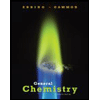 General Chemistry - Standalone book (MindTap Cour...ChemistryISBN:9781305580343Author:Steven D. Gammon, Ebbing, Darrell Ebbing, Steven D., Darrell; Gammon, Darrell Ebbing; Steven D. Gammon, Darrell D.; Gammon, Ebbing; Steven D. Gammon; DarrellPublisher:Cengage Learning
General Chemistry - Standalone book (MindTap Cour...ChemistryISBN:9781305580343Author:Steven D. Gammon, Ebbing, Darrell Ebbing, Steven D., Darrell; Gammon, Darrell Ebbing; Steven D. Gammon, Darrell D.; Gammon, Ebbing; Steven D. Gammon; DarrellPublisher:Cengage Learning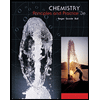 Chemistry: Principles and PracticeChemistryISBN:9780534420123Author:Daniel L. Reger, Scott R. Goode, David W. Ball, Edward MercerPublisher:Cengage Learning
Chemistry: Principles and PracticeChemistryISBN:9780534420123Author:Daniel L. Reger, Scott R. Goode, David W. Ball, Edward MercerPublisher:Cengage Learning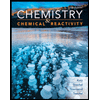 Chemistry & Chemical ReactivityChemistryISBN:9781337399074Author:John C. Kotz, Paul M. Treichel, John Townsend, David TreichelPublisher:Cengage Learning
Chemistry & Chemical ReactivityChemistryISBN:9781337399074Author:John C. Kotz, Paul M. Treichel, John Townsend, David TreichelPublisher:Cengage Learning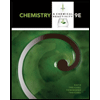 Chemistry & Chemical ReactivityChemistryISBN:9781133949640Author:John C. Kotz, Paul M. Treichel, John Townsend, David TreichelPublisher:Cengage Learning
Chemistry & Chemical ReactivityChemistryISBN:9781133949640Author:John C. Kotz, Paul M. Treichel, John Townsend, David TreichelPublisher:Cengage Learning Chemistry: The Molecular ScienceChemistryISBN:9781285199047Author:John W. Moore, Conrad L. StanitskiPublisher:Cengage Learning
Chemistry: The Molecular ScienceChemistryISBN:9781285199047Author:John W. Moore, Conrad L. StanitskiPublisher:Cengage Learning ChemistryChemistryISBN:9781305957404Author:Steven S. Zumdahl, Susan A. Zumdahl, Donald J. DeCostePublisher:Cengage Learning
ChemistryChemistryISBN:9781305957404Author:Steven S. Zumdahl, Susan A. Zumdahl, Donald J. DeCostePublisher:Cengage Learning

General Chemistry - Standalone book (MindTap Cour...
Chemistry
ISBN:9781305580343
Author:Steven D. Gammon, Ebbing, Darrell Ebbing, Steven D., Darrell; Gammon, Darrell Ebbing; Steven D. Gammon, Darrell D.; Gammon, Ebbing; Steven D. Gammon; Darrell
Publisher:Cengage Learning

Chemistry: Principles and Practice
Chemistry
ISBN:9780534420123
Author:Daniel L. Reger, Scott R. Goode, David W. Ball, Edward Mercer
Publisher:Cengage Learning

Chemistry & Chemical Reactivity
Chemistry
ISBN:9781337399074
Author:John C. Kotz, Paul M. Treichel, John Townsend, David Treichel
Publisher:Cengage Learning

Chemistry & Chemical Reactivity
Chemistry
ISBN:9781133949640
Author:John C. Kotz, Paul M. Treichel, John Townsend, David Treichel
Publisher:Cengage Learning

Chemistry: The Molecular Science
Chemistry
ISBN:9781285199047
Author:John W. Moore, Conrad L. Stanitski
Publisher:Cengage Learning

Chemistry
Chemistry
ISBN:9781305957404
Author:Steven S. Zumdahl, Susan A. Zumdahl, Donald J. DeCoste
Publisher:Cengage Learning
O-Level Chemistry | 16 | Qualitative Analysis [1/3]; Author: Bernard Ng;https://www.youtube.com/watch?v=oaU8dReeBgA;License: Standard YouTube License, CC-BY